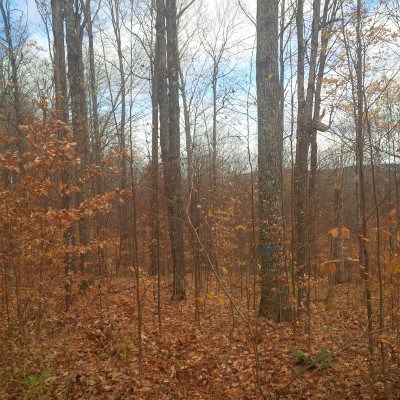Three Vital Steps A Landowner Can Take To Prevent Timber Theft
A recent study conducted by John Kula of the Certified Fraud Institute found that out of a group of random people surveyed, 30% will steal on a regular basis, 30% will steal depending on the situation while only 40% would never steal. The pool of the population sampled was comprised of the general population – which shows that the average criminal is not easily spotted and could possibly be your neighbor next door. Despite this sobering statistic – there is hope. Because a criminals biggest fear is being caught – and facing the shame and punishment that comes from it – measures can be put into place that prevent the chances of theft occurring which in turn keeps the other person “honest”
Lots Of Money Little Oversight
Considering that the average timber sale in Vermont or New Hampshire will generate between $25,000 - $45,000 in income for the landowner and that the process by which this money will be generated is far from typical, the environment is ripe for potential theft.
The following are a few points that illustrate the atypical nature of the timber industry:
- Huge cash flow is generated from a typical timber harvest. The gross income generated is substantially higher than the net and because of this there is an easy chance of money being siphoned off throughout the process
- Trees are a highly valuable economic asset that tends to be located in remote areas (free from eyes/ears) and not protected by security units, safes or locks.
- Proving where stolen logs come from is nearly impossible. This fact makes detection very hard. An average sawmill, wood yard or pulp mill receives dozens if not hundreds of loads every day from a diverse number of suppliers. Adding to the equation is the fact that most timber looks the same once it has been harvested. Trying to determine what loads came from where and whom – after the fact – is nearly impossible.
- High percentage of absentee ownership of the asset. In many cases the landowner doesn’t live on or near the land on which their timber is located. What better chance to steal someone’s property than when the owner is not around?
- Very few states view timber theft as a criminal matter. New Hampshire does while Vermont usually doesn’t. Instead Vermont relies on the discretion of the prosecuting attorney. The majority of the time neither they nor the investigating officers understand all the nuances that are involved in a timber theft – so they don’t normally pursue the case. This means that as the offended party you have to pursue the case in civil court. Up front lawyer costs, long drawn out trials and judges and juries who don’t really understand timber theft mean the landowner receives a raw deal.
In light of all of these facts the best thing a landowner can do is to make sure that timber theft doesn’t happen in the first place.
The following are three prudent measures a savvy landowner can take.
1. Don’t Conduct A Timber Harvest On Your Own.
Trying to sell your timber without the representation of a forestry expert is the equivalent of trying to represent yourself in a court case. Its risky and fraught with the potential for failure .The temptation is there when you see your neighbor having their land harvested and he or she speaks highly of the logging contractor or sawmill that is doing it. You think to yourself – why not? But although the contractors may seem nice and the work looks great and your neighbor is happy -, it doesn’t necessarily mean that you or your neighbor will be paid fully for all the wood that is harvested.
Studies have shown that when a reputable consulting forester is in charge of a timber sale the landowner receives 1/3 higher income and has 1/3 higher percentage of timber left standing than if they tried to conduct the harvest on their own.
2. Conduct Annual Inspections Of Your Property

3. Maintain Your Boundary Lines
Did you know the main excuse used by most thieves who steal timber is that they couldn’t see where the lines were.? Did you also know that, if the lines were not maintained - this excuse could count as a valid legal defense? What this means is that the thief will get off with a slap on his wrist because you the victim failed to properly maintain your lines! So, we can see the importance of making sure that your lines are well maintained and visible! A well maintained boundary line is a great way to keep a thief from claiming he thought “ it was mine” !
So there you have it – three simple ways to deter timber theft.
Implemented separately they will be very helpful. Taken together they will create a “shield” around your valuable timber asset. Don’t leave the protection of your timber up to chance and hopeful thinking - take the step that all savvy landowners make and put into place these measures today.











